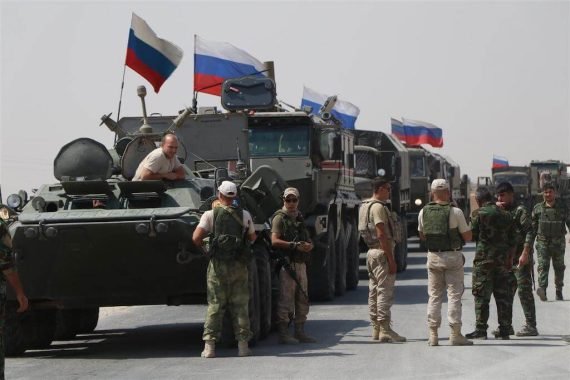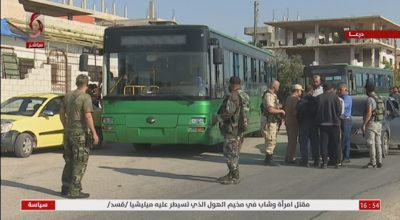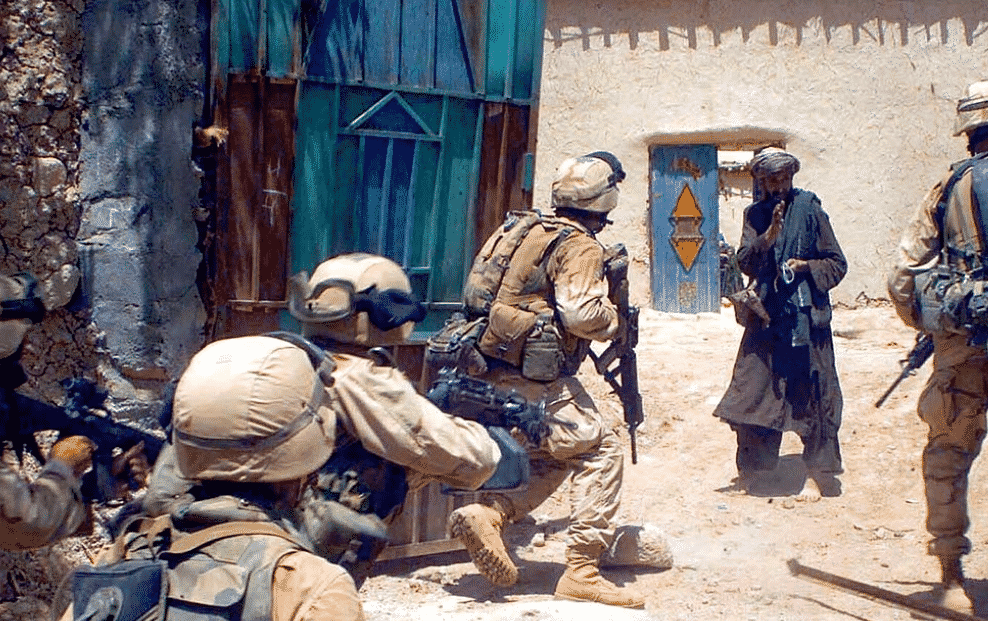Posted by INTERNATIONALIST 360°
Alexandr Svaranc
In today’s geopolitical dynamics, Russia and Turkey maintain a relevant regional presence in strategically important regions of the Near and Middle East, where the interests of the two powers can combine and diverge. However, the ruling elites have a high sense of maintaining a balance of power, respecting national interests, avoiding the prospect of radicalization of conflict situations and seeking decoupling to strengthen regional peace and mutually beneficial cooperation.
It should be recognized that the administrations of Presidents Vladimir Putin and Recep Tayyip Erdoğan have so far succeeded in finding relatively acceptable solutions to crisis situations through constructive dialogue, guiding the diplomacy of the two countries towards finding joint solutions on the same issue of Syria, overcoming the burden of historical stereotypes and building a new example of a worthy partnership.
In this context, Russia and Turkey have established a number of effective negotiating platforms (in particular the Astana, Sochi and Geneva summits in multilateral and bilateral formats). Russia understands the concerns of Turkish partners on key issues of Turkey’s national security (including ethnic separatism, external threats to territorial integrity and international terrorism). Russia, given its economic, resource, technological, intellectual and military-industrial strength, does not set out to suppress its important geographical neighbor. On the contrary, Moscow is developing a high level of strategic partnership in all the aforementioned areas, making a significant contribution to stabilizing Turkey’s financial and economic situation and strengthening its defense potential, and expects to expand trade with the ambitious goal of reaching USD 100 billion.
The stability and progress of each country depends not least on border security and the normalization of relations with its immediate neighbors. The political course of Turkey’s ruling Justice Party, led by its charismatic leader Recep Tayyip Erdoğan, proclaimed the “Zero Problems with the Neighbors” strategy in the early 2000s. For the Republic of Turkey, which will celebrate its 100th anniversary in 2023, the tradition of a post-imperial state remains high, where the complex history of the collapse of the Ottoman Empire following World War I was partly transformed into a painful relationship with many of its neighbors, who regained or lost their independence on the wreckage of the collapsed state.
Of course, the declaration of the said strategy without taking into account current realities cannot simultaneously succeed on all directions of Turkey’s borders and requires time and painstaking diplomatic work on bilateral and multilateral levels. At the same time, Turkey has had a number of positive achievements in shaping better relations with Russia, Georgia, Bulgaria and African countries. There is every reason to believe that Ankara is also interested in restoring full-fledged friendly relations with such a key country in the Arab East as Syria.
The peculiarities of the US regional policy in the Middle East have led to widespread destabilization in a number of Arab countries, to the negative phenomenon of the growth of radical Islamic movements with their institutionalization as Al Qaeda and ISIS (both terrorist groups banned in Russia), which eventually led to the chaos in a large part of the Levant. Accordingly, the destabilization of the political situation in the same Syria has provoked ethnic and religious strife, triggered a wave-like flow of a large army of refugees mainly to neighboring Turkey, and caused a significant social and economic crisis which took a heavy toll on the Turkish economy.
For Turkey, the politicization of the Kurdish issue within and near its national borders is an objective concern, forcing the authorities to pursue a tough course to prevent another territorial redistribution and, as a consequence, new social cataclysms in the Near and Middle East. Both Turkey and its reliable partners have to contend with these challenges.
The Russian peacekeeping operation in Syria since fall 2015 has set a new precedent for eliminating the US foreign monopoly in this region. With the arrival of the Russian Air Force, conditions have developed on Syrian territory for more effective interaction with key states in the Near and Middle East (in particular Turkey and Iran) to curb the threat of international terrorism emanating from ISIS (terrorist group banned in Russia) and to find political ways to resolve the accumulated differences in the Syrian-Turkish agenda, combining them with effective peacekeeping operations.
Turkey, which has problems with Kurdish separatism, is very sensitive to attempts to activate the Kurdish militant movement in Syria. This is why, after the Syrian Kurds declared political autonomy in 2014, Ankara recognized the Syrian Kurdish Democratic Union Party (PYD) as a terrorist organization and ally of the PKK, which is banned in Turkey, and the fighting wing of the PYD, the People’s Protection Units (YPG), as a military opponent. Partly due to the Russian presence in Syria, a number of Turkey’s limited military operations in the north have become a reality in order to avoid the creation of quasi Kurdish independent territorial entities capable of intensifying terrorist and separatist threats to Ankara. In particular:
– Operation Euphrates Shield in 2016-2017 (as a result, the cities of Jarablus and al-Bab were subjected to military mop-ups, 2,000 square kilometers of Syrian territory came under Turkish control with the formation of a security buffer zone there);
– Operation Olive Branch in 2018 to prevent the Kurdish-populated cantons of Jazira, Kobani and Afrin from uniting and the Kurds from reaching the Mediterranean Sea (Afrin ended up under full control of Turkish forces);
– Operation Peace Spring in October 2019, with Turkish military and pro-Turkish Free Syrian Army (FSA) units advancing deep into northern Syria, taking control of new population centers – Ras al-Ain and Tel Abyad, cutting the strategic M-4 highway. Thanks to effective negotiations between the Russian and Turkish leaders in Sochi on October 22, 2019, new zones of influence in north-eastern Syria were secured, with the status quo maintained in Turkish-occupied areas and the withdrawal of all Kurdish groups from the entire border with Turkey 30km inland, as well as the establishment of Russian-Turkish patrols in the area.
It should be noted that from operation to operation, Turkey has built up its military forces from special forces units to the use of armored vehicles, artillery and air force with a combination of infantry from the same FSA units, gaining new experience in combat operations in this theater.
In November 2022, with air strikes against Kurdish military bases (in Kobani, Aleppo, Raqqa, al-Hasakah), Turkey announced a new “Operation Claw-Sword” in northern Syria. The formal occasion was the terrorist act of November 13, 2022 in Istanbul’s Istiklal Square, which the Turkish intelligence services recognized to be organized by Kurdish insurgents (in particular the PKK and a Kurdish fighter executor from Syria). Ankara aims to implement a declared plan to establish a 30-kilometer security zone along the entire border with Syria.
Erdoğan has announced his intention to conduct a ground operation involving regular army forces alongside the air operation. He also criticized Russia to a certain extent. Turkey’s leader believes that Moscow has not fully met its obligations under the 2019 Sochi agreements to withdraw Kurds from the 30-kilometer zone. However, the creation of the same “Idlib Security Zone” with Russian participation was, infamously, prevented by the fact that the US refused to withdraw its forces from the zone with the support of local Kurdish forces.
Russia and Turkey have gone a long way towards an effective partnership in the Syrian crisis. Of course, every time Moscow and Ankara make progress in finding new solutions to stabilize the situation in northern Syria, the US, aware of the loss of its own hegemony in the region, finds another form of torpedoing the Russian-Turkish agreements. Accordingly, the Russian-Turkish effective partnership is perceived in Washington as a kind of attack on America’s monopoly and a breakdown of NATO unity, plagued by equally obvious internal contradictions.
Meanwhile, Russia-Turkey relations are progressing with strong results to show for it. Thus, according to Mehmet Samsar, Turkish Ambassador to Russia, the trade turnover between Russia and Turkey by the end of 2022 could be close to USD 50 billion, an increase of USD 15 billion over 2021. The scope of this partnership is expanding: from a gas pipeline to a nuclear power plant, from military and technical cooperation to joint actions for regional peace, from a grain deal to a gas hub. Turkey remains one of the few NATO countries that has not supported total sanctions against Russia in the context of the special military operation in Ukraine, pursues a traditionally pragmatic policy and maintains its role as a reliable partner and effective mediator in relations with its northern neighbor.
The author believes that, in the new year too, the Russian-Turkish situational alliance that has developed in recent years will maintain its momentum of growth, trust and optimization of new opportunities. The coming year 2023 will prove to be a time of intense and important political, economic, military and cultural events in the lives of the two countries. In particular, the next presidential election in Turkey, the launch of ambitious new economic projects (the gas hub, the unblocking of important regional communications, the prospect of a second nuclear power plant near Sinop on the Turkish Black Sea Coast), the establishment of stability in the safe corridor on the Turkish-Syrian border, the approach of peace in the Russian-Ukrainian conflict, etc. All this points to a broader agenda of Russia-Turkey relations, where the parties can complement each other and interact effectively.
Related Videos
Related news
- Turkish, Russian presidents hold phone conversation
- US Syria looting: Occupation forces smuggle 60 trucks of oil, wheat to Iraq
- US Army Steals 60 Tankers and Trucks of Syrian Oil and Wheat
- UAE’s envoy to UN decries politicization of Syrian chemical weapons issue
Filed under: Al Qaeda, ISIS – Daesh, Kurdistan, Russia, Syria, US-led NATO Alliance, USA, Vladimir Putin | Tagged: Efrain, FSA, Global war on Syria, Kobani, Operation Spring Shield, Ottoman Empire, PKK, PYD, Recep Tayyip Erdogan, Syrian Occupied Idlib, YPG | Comments Off on Russian-Turkish Partnership in the Area of Another Turkish-Syrian Crisis




















